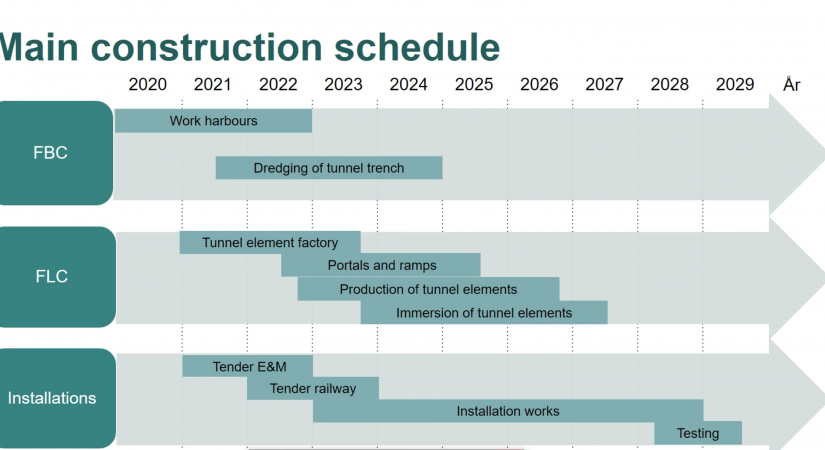The Fehmarn Belt Tunnel May Increase Wildlife Populations in the Fehmarn Belt

European eel, Atlantic cod, and porpoises—these are just some of the marine species living in the waters along the southern coast of Lolland with declining populations.
According to Sund & Bælt, the construction of the Fehmarn Belt Tunnel may actually improve conditions for marine wildlife and plant life.
The reason lies in the new breakwaters and rock structures along the coast, which are part of the Fehmarn project and are in short supply in Danish waters. These rock structures function as underwater reef-like habitats, offering shelter, breeding grounds, and hiding places for marine life.
A Accurate Picture of Biodiversity
Sund & Bælt is collaborating with the Danish consulting company DHI A/S, which has been collecting video footage and analyzing water samples near the Fehmarn Belt Tunnel construction site as part of a marine monitoring program.
To create an accurate picture of biodiversity in the area, DHI uses an advanced method to analyze DNA traces in seawater. This method, called eDNA, has the advantage of being able to identify which species inhabit the area from a single water sample.
This provides a more nuanced picture of marine life along the coast, as the method can detect species that are difficult to find through traditional monitoring—either because they rarely appear or exist in low numbers.
It is not only Sund & Bælt and DHI are not the only ones interested in the results. Students from the Technical University of Denmark (DTU) and Roskilde University (RUC) are using the research findings to study eDNA, meaning that the collected data is already contributing to knowledge-sharing.
Expanding the Study
Sund & Bælt is now expanding the study to include a new coastal area where excavated material from the tunnel trench has been reused in a large land reclamation project.
Seven kilometers of coastline have been moved approximately 500 meters further out into the sea, and new stone embankments have been built. These structures create new marine habitats with the potential to boost biodiversity in the area.
The Think-Tank ”Hav” (Sea) sees this as an excellent opportunity to create habitats for a wide range of marine animals and plants close to the Fehmarn Belt Tunnel construction site.
“In Think-Tank ”Hav” we believe that the proposal to monitor habitat impacts during the expansion of the Fehmarn link is well-founded and highly recommendable in several ways. Effect monitoring is an obvious opportunity to gain insight into how biodiversity returns and adapts to new habitats created by human-made marine infrastructure projects,” says Søren Laurentius Nielsen, Scientific Program Manager at Hav, which focuses on increasing knowledge about Denmark’s marine environment.
Monitoring the Development
DHI and Sund & Bælt will closely monitor the development of these new habitats before and after the construction of the Fehmarn Belt Tunnel to determine whether the human-made coastal area contributes positively to the marine environment and blue biodiversity.
“We are very pleased with the preliminary results and look forward to continuing to monitor marine life. It is crucial to ensure that the Fehmarn project contributes positively to the marine environment and blue biodiversity,” says Lars Hansen, Project Manager at Sund & Bælt’s Environmental Team.
The results are expected to be available in Spring 2025 and will serve as a foundation for future monitoring efforts.






